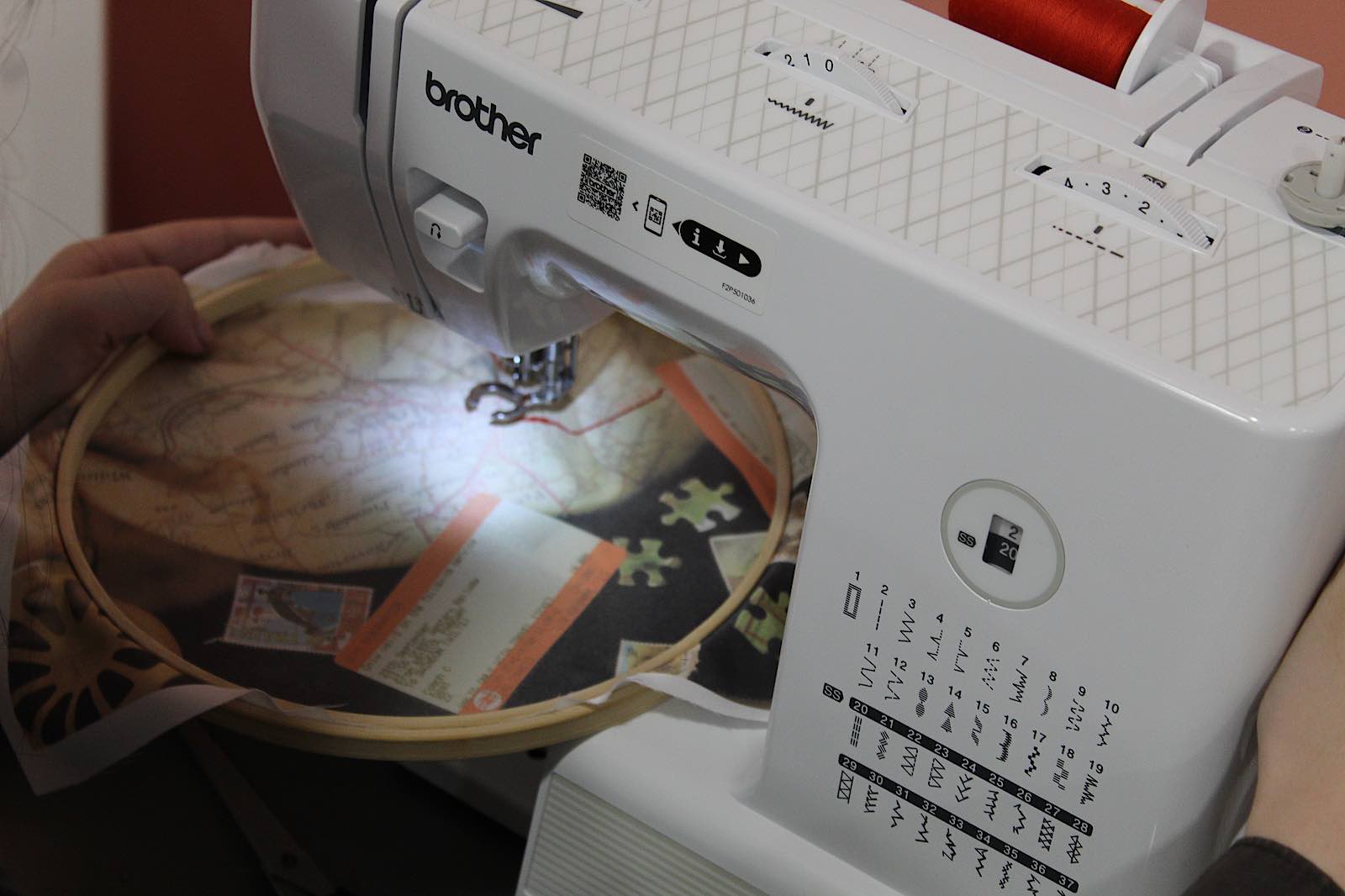
Phase I of the Great Train Tapestry’s creation has now reached its close and thanks to the creative guidance of Lisl Ponger, we continue our process with a solid foundation of ideas and an established vision for the project’s next steps!
As we progress full steam ahead into Phase II, it’s important to look back on the work and collaboration that have led to this point. Lisl’s series of workshops, discussions and excursions have helped to formulate a Collective Pool of Knowledge which we can now use to inform the physical making of the tapestry. What did we get up to during Phase I?
First on the agenda was a hackathon to share project ideas and collectively decide on the size, structure and content of the final tapestry. Ultimately, it was determined that the completed artwork will consist of 70 panels, quilted together, which will weave together many narratives including those of travel, trains, immigration, borders, labour, women, hidden workers, textile industries, class and power dynamics.
Inspired by the Expressionists, a ‘drift’ then took place; this involved venturing out into the world in pursuit of creative inspiration. Gloucester Antiques Centre and second-hand shops were explored in search of train-related objects and other thematically relevant items; then, old train routes were followed to find traces of railways which have now been lost. Interesting discoveries were documented and then consolidated as a group.
Travelling by train from Gloucester station, the next step was a visit to the Steam Museum in Swindon. Here, we were able to broaden our collective knowledge of GWR’s history, which will be a crucial aspect of the tapestry’s story. This was also a useful opportunity to take some photographs for our Great Train Tapestry image bank, which will provide visual inspiration during the making stage of the artwork.
At the Hundred Heroines Museum, a session was held in which everyone was given the opportunity to share, discuss and receive feedback for their personal work. This was a great way to learn about the creative approaches of others, which opened doors into conversations about new artistic perspectives and methodologies. During this session, Lisl shared insight into a selection of her own works, giving participants a valuable opportunity to learn more about her motivations and working process.
Next, we began sampling various artistic techniques to explore which methods could be used during the construction of the tapestry. Lisl taught us her inventive scanner bed technique, where objects of one’s choosing can be arranged on a scanner to create a crisp, eye-catching composition rich in storytelling capabilities. Textile-based techniques such as appliqué, sublimation, and embroidery were explored to determine how they could be incorporated into the finished piece.
Having now formed a considerable Collective Pool of Knowledge, Phase II of this project can now be approached with a broad and interesting set of information as its foundation. This process could not have gone ahead without the indispensable guidance of Lisl Ponger, and we at Hundred Heroines look forward to her continued collaboration with the museum and the Great Train Tapestry project.
If you are interested in participating in the creation of the Great Train Tapestry, why not attend one of our Open Access Sessions and have a go at making a panel? Alternatively, contact us at hello@hundredheroines.org if you would like to share your ideas or learn more about the project.
By Ally Bartley










